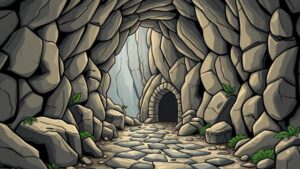Exploring Eroded Cliffs for Artifacts From Early Human Activity
Exploring Eroded Cliffs for Artifacts From Early Human Activity
The study of early human activity through archaeological artifacts is a cornerstone of understanding our prehistoric past. Among various locations, eroded cliffs stand out as rich deposits of material culture. These natural formations can serve as a geological canvas that helps to enhance our comprehension of ancient human lifestyles, survival strategies, and social structures. This article delves into the significance, methodologies, findings, and implications surrounding the exploration of these vital sites.
The Significance of Eroded Cliffs
Eroded cliffs provide unique environments where layers of earth expose remnants of human habitation. They often preserve artifacts that might otherwise be lost to the ravages of time and nature. Cliffs can act as natural time capsules, encapsulating various artifacts such as tools, pottery, and even traces of habitation.
One noteworthy example is the coastal cliffs of southern England, where archaeological remains have revealed the presence of early hominins and Neolithic communities. e cliffs serve not only as a site for discovering tools and bones but also as a testament to the adaptation strategies of early humans to changing climates and landscapes.
Archaeologists employ a range of methodologies to explore eroded cliffs. The processes typically include:
- Geological Mapping: This involves documenting the stratigraphy of the cliff to understand the chronological sequence of deposits.
- Excavation: Careful excavation of layers helps in retrieving artifacts while minimizing disturbance, following stratigraphic techniques.
- Sediment Analysis: Analyzing soil composition can reveal information about climate conditions during the time of human activity.
- Remote Sensing: Technologies such as LiDAR (Light Detection and Ranging) can assist in identifying potential sites before physical exploration.
A compelling case study can be seen in the work conducted at the Cueva de las Manos in Argentina, where remote sensing and careful excavation have uncovered thousands of artifacts preserved in the cliffs archaeological layers, dating back thousands of years.
Findings from Eroded Cliffs
The findings from eroded cliffs have provided invaluable insights into early human life. Analysis of artifacts like tools and remnants of food has shed light on dietary practices and social structures.
For example, the discovery of stone tools within the cliffs of the Olduvai Gorge in Tanzania has been pivotal in understanding the technological evolution of early hominins. e artifacts suggest that early humans were not only hunters but also foragers, adapting to diverse ecological niches. Further, carbon dating of associated organic material has allowed researchers to construct timelines of human activity.
Also, studies have highlighted the presence of artistic expressions, such as rock paintings and carvings, which offer a glimpse into the cognitive and cultural patterns of prehistoric societies. The discovery of such artifacts implies a level of complexity in social organization and communication.
Real-World Applications
The exploration of eroded cliffs holds practical implications beyond academic inquiry. e findings can inform current environmental practices and conservation efforts by understanding how ancient peoples adapted to their environments. This knowledge can guide modern societies in sustainable living, resource management, and climate adaptation strategies.
Also, the insights gained from cliff explorations can enhance education and tourism initiatives. Sites rich in archaeological significance can become focal points for cultural heritage tourism, generating economic benefits while educating the public about human history.
Challenges of Eroded Cliff Exploration
Despite the rich potential of eroded cliffs as research sites, several challenges accompany this exploration. Erosion and natural erosion processes can obliterate vital artifacts; thus, prompt action is required to document finds. The safety of excavators and the preservation of delicate artifacts are also paramount concerns. Also, ongoing climate change poses a threat by accelerating erosion and changing landforms.
Conclusion and Actionable Takeaways
Exploring eroded cliffs for artifacts from early human activity is a complex yet rewarding endeavor that combines geology, archaeology, and anthropology. findings contribute not only to our understanding of the past but also offer practical applications for the present and future.
For individuals interested in this field, whether as professional archaeologists or amateur enthusiasts, consider the following actionable takeaways:
- Engage in local archaeological societies to learn more about cliff excavation opportunities.
- Participate in conservation efforts to protect vulnerable archaeological sites.
- Stay informed about new research methodologies and findings through academic journals and conferences.
The exploration of eroded cliffs is a fascinating window into humanitys past, and with careful study and respect, we can continue to uncover the stories that shape our collective history.



